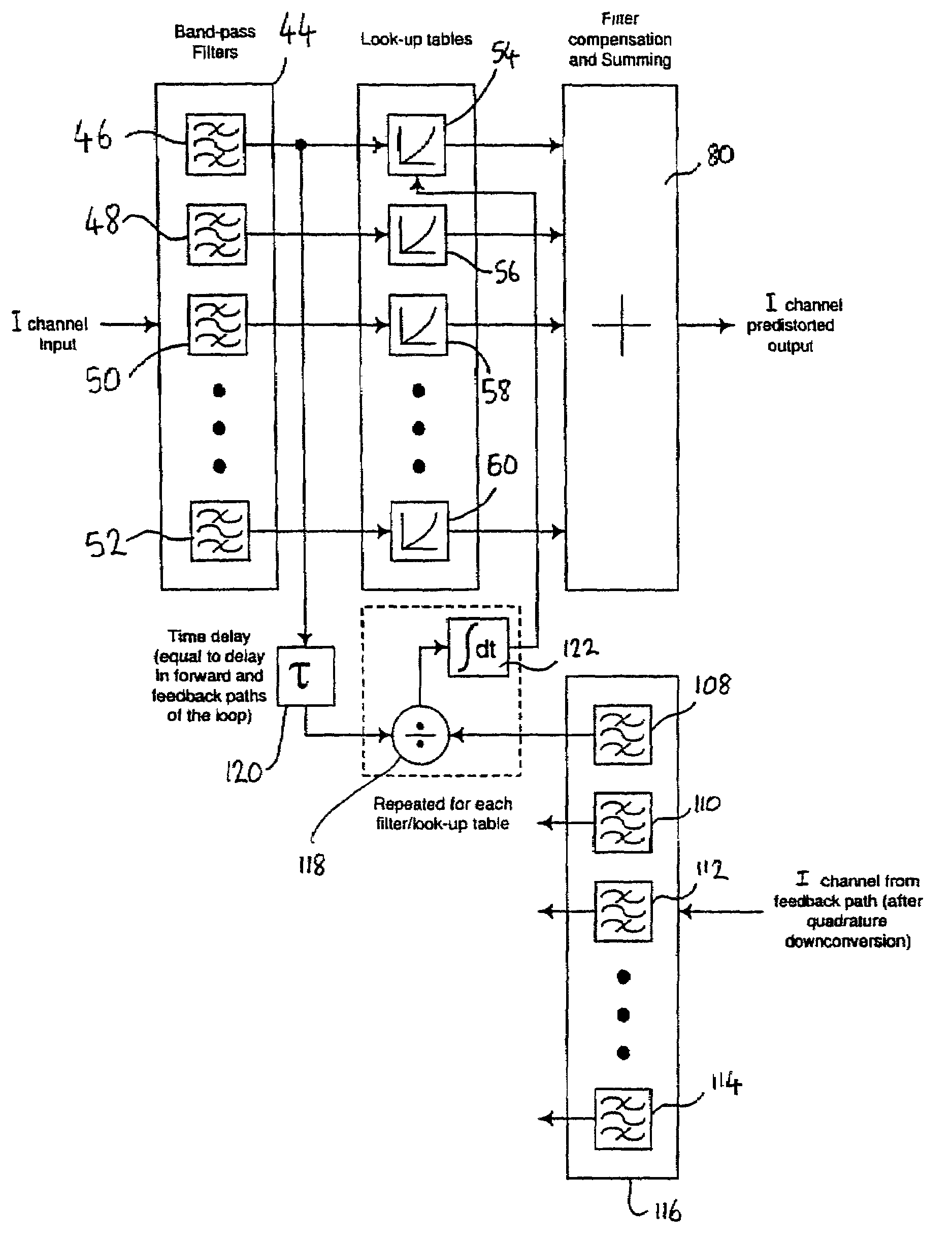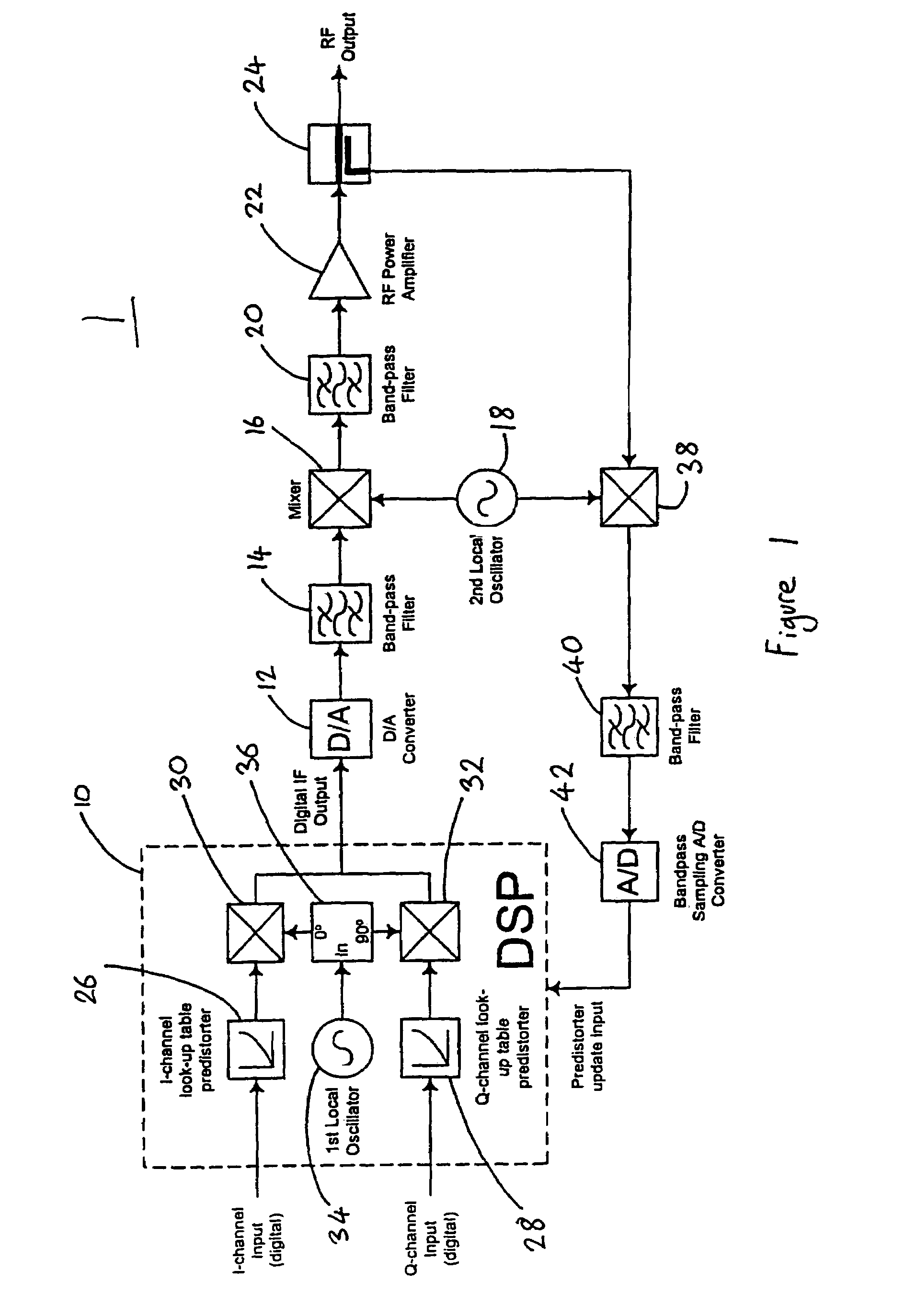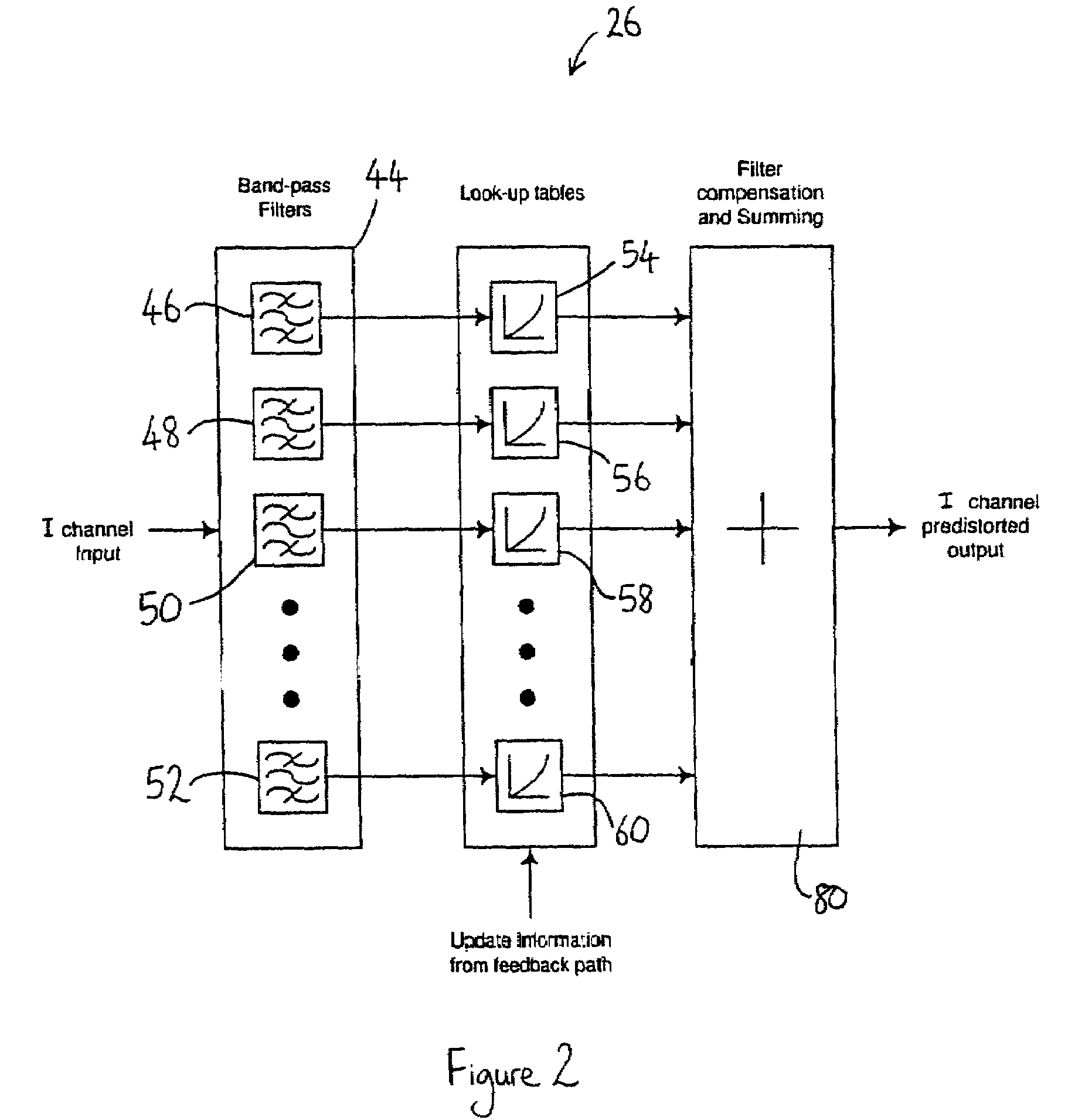Reducing distortion of signals
- Summary
- Abstract
- Description
- Claims
- Application Information
AI Technical Summary
Benefits of technology
Problems solved by technology
Method used
Image
Examples
Embodiment Construction
[0023]With regard to FIG. 1, the transmitter, generally indicated 1, produces a radio frequency (RF) output from a baseband, digital input signal in quadtrature format. The quadrature input signal comprises an inphase channel input I and a quadrature channel input Q (phase displaced by 90° with respect to the I channel).
[0024]The transmitter 1 comprises a digital signal processor (DSP) 10 which receives the I and Q channels as inputs. The digital signal processor 10 predistorts the input signal (i.e. its I and Q components) and performs frequency up conversion of the predistorted input signal from the baseband to the intermediate frequency (IF) band. The DSP 10 supplies this digital IF band predistorted signal to a digital to analogue converter (DAC) 12 which supplies an analogue version of this signal to band pass filter 14. Mixer 16 combines the output of filter 14 with a signal from local oscillator 18 and produces an output spectrum which contains signals in a RF band destined f...
PUM
 Login to View More
Login to View More Abstract
Description
Claims
Application Information
 Login to View More
Login to View More - R&D
- Intellectual Property
- Life Sciences
- Materials
- Tech Scout
- Unparalleled Data Quality
- Higher Quality Content
- 60% Fewer Hallucinations
Browse by: Latest US Patents, China's latest patents, Technical Efficacy Thesaurus, Application Domain, Technology Topic, Popular Technical Reports.
© 2025 PatSnap. All rights reserved.Legal|Privacy policy|Modern Slavery Act Transparency Statement|Sitemap|About US| Contact US: help@patsnap.com



